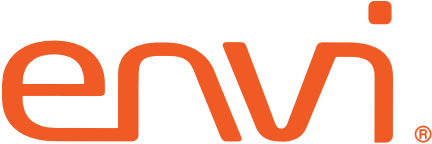By Jeff Lawrence, Vice President of Business Development, IOS
I started my career as an auditor/CPA, so having world-class Accounts Payable (AP) processes is near and dear to my heart. Most of what happens in your AP workflow are downstream activities, and almost always treated as afterthoughts in the development of good procure-to-pay processes. Among our customer organizations, I see many that are making improvements in AP – finding ways to link together what happens upstream with what they do downstream. In turn, they’re measuring real dollar and labor savings as they improve.
One of our company commitments at IOS is to continually share best practices. With more than 5,000 customer sites using our solutions, we’re identifying practices that are working to help facilities streamline supply chain, eliminate burdensome manual processes and reduce costs.
Today I want to share with you a quick list of 11 Best Practices that you can use to improve AP processes:
1. Create a purchase order (PO) for every product and supply order. With a standardized ordering process, you’ll build insight for budgeting and cost allocation, and a single location to find answers.
2. Establish expense codes for all purchased items. If you’re using Envi, the system automatically assigns expense codes when POs are created.
3. Direct staff to select products from an approved formulary. You can save costs by driving on-contract purchasing for best available pricing and tiers.
4. Manage ongoing costs with approved GPO contracts. Make sure you can directly interface your GPOs to align contract spend.
5. Approve POs before submitting to vendor. By shifting approvals to the front, you eliminate dollars spent on unnecessary items or incorrect prices. Often it’s too late once the invoice arrives!
6. Receive delivered items in your materials management system. This allows you to be sure you’re paying only for products received and can identify items on POs that haven’t yet been delivered.
7. Maximize the invoices you receive electronically. You can reduce AP staff data entry and manual keying errors, and build the foundation for 3-way electronic matching.
8. Leverage tools to create an electronic 3-way match to validate accuracy from the PO, ultimately to the invoice. Your organization will save time and money by automating invoice matching, and you’ll ensure you’re only paying for items received at the correct PO price.
9. Create a central shared document repository. If you’re using Envi, there’s a Document Attachment module that lets you save important documents in a centralized location. Determine which documents need an electronic copy, such as custom products, special orders, return authorizations, receipt or invoices.
10. Take advantage of interfaces that enable data (like electronic invoices) to flow through to your AP system. If you’re keying invoices into your AP system, you’re wasting time. Use interfaces that let information flow between systems. Your staff will automate data entry, increase accuracy and ultimately, reduce costs.
11. Schedule regular AP check-ups. Make sure you have capable reporting tools that let you continually identify issues and keep financials up-to-date. PO History reports provides visibility into all your organization’s ordering, at a single facility or across the entire system.
Taking steps to improve your AP processes will save you significant time and dollars. Your team will spend more time focused on patient care, and less time chasing paper and stuck in manual processes, which is so 1990s.
Look for more best practices coming soon!
About the Author
Jeff Lawrence
Vice President of Business Development
Inventory Optimization Solutions (IOS)
With a substantial background in healthcare supply chain technology, Jeff Lawrence joined Inventory Optimization Solutions (IOS) in 2009 as the Vice President of Business Development. For over 20 years, Jeff has focused on leveraging supply chain technology to build a more efficient and sustainable healthcare industry. With hands-on experience helping providers implement technology to improve business processes, Jeff works in partnership with his customers, sharing best practices to increase automation and improve overall business results. Jeff’s career has included roles in business development and sales, along with finance, implementation, operations, and strategy development. He brings a strong blend of customer focus, business strategy, innovation and execution, which helps IOS quickly and efficiently deliver inventory and supply management solutions to provider organizations throughout the continuum of care.

